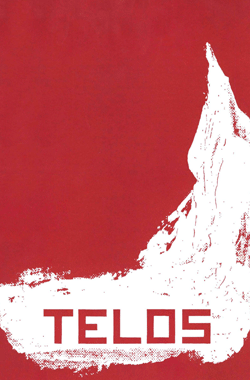As an occasional feature on TELOSscope, we highlight a past Telos article whose critical insights continue to illuminate our thinking and challenge our assumptions. Today, Brendan O’Connor looks at Joseph Ferrandino’s “Joyce and Phenomenology,” from Telos 2 (Fall 1968).

In “Joyce and Phenomenology,” Joseph Ferrandino proposes a “phenomenological reading” of James Joyce’s Ulysses, and while he admits that much of the epic eludes such sweeping, categorical interpretations, he maintains that “in terms of aims and methods, Ulysses can only be seen as a concrete application of what Husserl means by phenomenology” (84). Ferrandino provides an excellent gloss on Husserl and his notoriously difficult philosophy before he delves into the equally difficult Joyce. Ferrandino explains that the aim of Husserl’s phenomenology is “to get back to the ‘things themselves.’ This is done by suspending judgment . . . reducing the immediate experience to the operations of the life-world (the phenomenological reduction), and then constituting again the whole in its proper subjective sense” (87). Joyce, in objectifying individual experience so deftly, enables us, as readers, to consider our own experience from a sort of literary remove. Ferrandino understands this to be analogous, even equivalent, to the work of the phenomenologist: “It is from this viewpoint that the reader can come to grasp the proper meaning of the experience, just as the phenomenologist who has performed the reduction can view the bracketed experience and its correct sense” (91). The reader’s experience of Ulysses, Ferrandino argues, is a reflexive one, and by bringing us into an awareness of ourselves as readers the text also aligns us with Joyce as the author: “We, as readers, have access to the same viewpoint that Joyce has. We are not Stephen walking on the strand contemplating philosophical problems. The philosophical is not the object of our act of awareness. It is Stephen’s object. Our object is Stephen’s act of awareness and its object” (90).
Ferrandino makes reference to the close of A Portrait of the Artist as a Young Man, where Stephen Dedalus famously proposes to “encounter for the millionth time the reality of experience and to forge in the smithy of my soul the uncreated conscience of my race.” Ferrandino reads this as Joyce’s mission as well, arguing that Joyce’s ultimate aesthetic aim is a “universalization that orchestrates the dialectic between the individual and the universal” (89). This dialectic is articulated by the title of Joyce’s next novel, wherein Leopold Bloom’s quotidian journey through modern Dublin is figured in Classical, epic terms. In this way, the experiences of the individual entities of Joyce’s work are universalized, rendered “typical” in a Husserlian sense—the individual soul contains the conscience of an entire race. Ferrandino argues, “The reader of Ulysses is thus in a unique position. He sees himself from the outside” (92). This dialectic, then, between the individual and the universal, reveals the very structures of subjectivity.
Joyce articulates this dialectic in subtle and potentially problematic ways. Ulysses contains a plurality of different literary styles and does not consistently conform to the epic structure. Ferrandino, however, denies that Joyce is a methodological pluralist, asserting instead that Joyce’s technical variety is in fact reducible to a single method, and that that method is “the ‘artist as God.’ That is to say, the artist writes from the viewpoint of God—the fully concrete subject” (89). Ulysses‘ three major narrative entities, Molly, Stephen, and Bloom, who appear so divergent both in their “actual” thought processes and in Joyce’s representation of those thought processes are read not as a multiplicity of voices but rather as a narrative trinity—one single entity comprised of three parts. For Ferrandino, the cacophony of Ulysses is ultimately univocal: the complex categories laid out by the Gilbert and Linati schema—complicated tables and subtables of categories taken from Joyce’s letters that claim to describe the underlying structure of the novel—are abstractions only helpful for organizing the text, not understanding it. Ferrandino reads Joyce’s genre-bending and experimentalism not as fragmented and chaotic but as unified and coherent, as demonstrative not of the proliferation of individual subjectivities but rather of the ultimate presence of a pure subjectivity. Ferrandino argues that it behooves us to remember that the categories by which we conduct our analysis—whether of the world or of Ulysses—are of our own making: “The point is that man is the creator of these categories and, as such, he can very well transcend them” (89).
Read the full version of Joseph Ferrandino’s “Joyce and Phenomenology” at the Telos Online website. If you are affiliated with an institution that is an online subscriber to Telos, you have free access to our complete online archive. If not, you can purchase 24-hour access to this and other Telos articles at a per-article rate. Follow the article link for more details.



